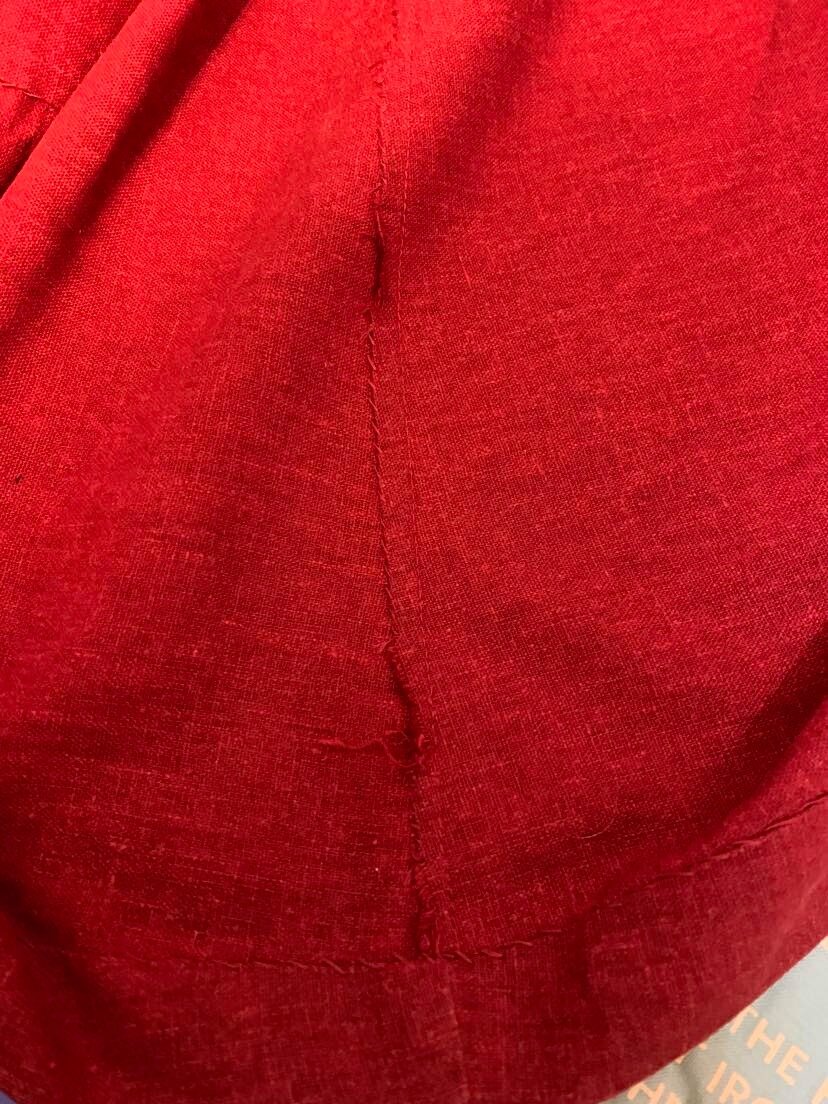learning from past me.
origin story.
I think I bought this fabric for my late husband, but didn’t get to make it up for him, so it’s mine now. This is one of my favorite serks. I love the color, the quality of the fabric, the fit… I don’t love the fact that I was dumb and didn’t finish the seams. I have repented and made amends (see what I did there?).
finish. your. seams.
When I made this dress, I didn’t finish the seams. I don’t know why I thought I was immune from fraying; it was some sort of sartorial hubris. The seams on this dress were fraying apart, so I made it my mission to flat fell the seams and save one of my favorite garments.
mostly easy.
Most of the seams had plenty of seam allowance to flat fell them and protect the raw edges, so that went smoothly.
“mostly”.
Actually, once I realized that I didn’t have to put a patch on the outside and therefore didn’t need to match colors, this really was an easy fix. All I needed to do was support the fabric and protect the raw edges that I couldn’t turn under. I took a strip of linen from my scrap bin (scraps were called “cabbage” by Renaissance tailors, so my scrap bin is called “the cabbage patch”), folded the edges under, and stitched it down neatly over the seams that were at risk of fraying away.
neat, tidy, and workmanlike.
I feel really confident with this repair. It’s closely stitched (I struggle with making larger stitches), so it’s not going anywhere, and because it’s on the skirt of the dress, it’s not under any tension — it just needs to protect the seam from abrasion during washing, which so far it’s doing admirably.




